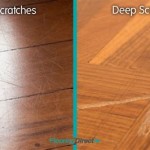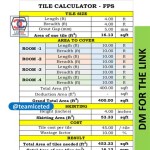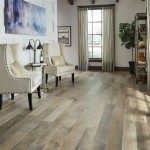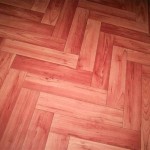Laminate vs. Vinyl Plank Flooring: A Comprehensive Comparison
Choosing the right flooring is a crucial decision for any homeowner or business owner. It impacts the aesthetic appeal, functionality, and overall value of the space. Among the many options available, laminate and vinyl plank flooring are two of the most popular choices. Both offer compelling advantages, but they also have distinct differences that make one a better fit for certain applications than the other. This article provides a detailed comparison of laminate and vinyl plank flooring, examining their key features and helping readers make an informed decision based on their specific needs and priorities.
Understanding the Materials: Construction and Composition
The fundamental distinction between laminate and vinyl plank flooring lies in their composition. Laminate flooring is a multi-layer synthetic flooring product primarily composed of compressed fiberboard. Typically, a laminate plank consists of four layers: a wear layer, a decorative layer, a core layer, and a backing layer.
The wear layer, usually made of aluminum oxide, is designed to resist scratches, stains, and fading. This protective layer is crucial for the flooring's durability and lifespan, especially in high-traffic areas. Beneath the wear layer is the decorative layer, which is a high-resolution photographic image that mimics the appearance of wood, stone, or tile. This layer is responsible for the flooring's aesthetic appeal and comes in a wide variety of styles and colors.
The core layer, also known as the substrate, is typically made of high-density fiberboard (HDF) or medium-density fiberboard (MDF). This core provides the structural stability and thickness of the plank. The backing layer is the bottom layer of the laminate plank, designed to provide moisture resistance and stability. This layer protects the core from moisture damage and helps prevent warping or buckling.
Vinyl plank flooring, on the other hand, is made entirely of synthetic materials, primarily polyvinyl chloride (PVC). It typically consists of several layers, including a wear layer, a decorative layer, and a core layer. Some vinyl planks also include an attached underlayment for added comfort and sound insulation.
The wear layer in vinyl plank flooring is a transparent, protective coating that safeguards against scratches, stains, and scuffs. The thickness of the wear layer is a crucial factor in determining the flooring's durability, with thicker wear layers providing greater protection. The decorative layer is a printed image that replicates the look of natural materials, similar to laminate flooring. The core layer is the main structure of the vinyl plank, providing stability and water resistance. It can be made of different types of vinyl, such as rigid core or waterproof core, depending on the specific product.
The construction differences between laminate and vinyl plank flooring give rise to their differing characteristics in terms of durability, water resistance, and overall performance.
Durability and Longevity: Wear and Tear Resistance
Durability is a primary consideration when choosing flooring, as it directly impacts the longevity and maintenance requirements of the flooring. Laminate flooring is known for its scratch resistance, thanks to its durable wear layer made of aluminum oxide. This makes it a suitable choice for households with pets or children, where the risk of scratches and scuffs is higher. However, laminate flooring can be susceptible to chipping or denting if subjected to heavy impact.
The durability of vinyl plank flooring largely depends on the thickness of its wear layer. Thicker wear layers provide greater resistance to scratches, stains, and scuffs. Vinyl plank flooring is also more resilient than laminate, meaning it can better withstand impacts and heavy foot traffic without denting or chipping. High-quality vinyl plank flooring can last for many years, making it a worthwhile investment for both residential and commercial spaces.
While both laminate and vinyl plank flooring offer decent durability, it's crucial to consider the intended use of the space when making a decision. For high-traffic areas or environments prone to spills and accidents, vinyl plank flooring might be the more suitable option due to its superior water resistance and resilience. For areas with moderate traffic and a greater emphasis on scratch resistance, laminate flooring could be a viable choice.
Water Resistance and Moisture Management: A Critical Distinction
One of the most significant differences between laminate and vinyl plank flooring is their water resistance. Laminate flooring, with its fiberboard core, is inherently susceptible to water damage. When exposed to moisture, the core can swell, warp, or even disintegrate, leading to costly repairs or replacements. While some laminate flooring products are treated with water-resistant coatings, they are not completely waterproof and are not recommended for areas with high moisture levels, such as bathrooms or laundry rooms.
Vinyl plank flooring, on the other hand, is completely waterproof. Because it is made entirely of synthetic materials, water cannot penetrate the planks and cause damage. This makes vinyl plank flooring an ideal choice for bathrooms, kitchens, basements, and other areas prone to moisture exposure. It can withstand spills, leaks, and humidity without warping, swelling, or developing mold or mildew.
The waterproof nature of vinyl plank flooring gives it a distinct advantage over laminate flooring in certain applications. For homeowners concerned about water damage, or those looking to install flooring in moisture-prone areas, vinyl plank flooring is the superior option.
Aesthetic Appeal and Design Options: Replicating Natural Materials
Both laminate and vinyl plank flooring are available in a wide range of styles, colors, and patterns, making it possible to replicate the look of natural materials such as wood, stone, and tile. The decorative layer in both types of flooring is a high-resolution photographic image that is designed to mimic the appearance of these natural materials. The quality of the image and the texture of the surface can significantly impact the realism of the flooring.
Laminate flooring often excels at replicating the look of hardwood flooring. Manufacturers can create planks with realistic wood grain patterns, textures, and even bevelled edges to mimic the appearance of real wood planks. The embossed textures on laminate flooring can enhance the realism and create a more authentic look and feel.
Vinyl plank flooring is also capable of replicating the look of wood, stone, and tile with impressive accuracy. Advancements in printing technology have allowed manufacturers to create vinyl planks with highly detailed and realistic patterns. Vinyl plank flooring is also available in a wider variety of textures and finishes, allowing homeowners to achieve a more customized look.
While both laminate and vinyl plank flooring offer excellent design options, the choice between the two often comes down to personal preference. Some homeowners prefer the look and feel of laminate flooring, while others prefer the versatility and durability of vinyl plank flooring.
Installation and Maintenance: Ease of Use and Upkeep
Both laminate and vinyl plank flooring are relatively easy to install, making them popular choices for DIY projects. Most laminate and vinyl plank flooring products feature a click-lock installation system, which allows the planks to be easily snapped together without the need for glue or nails. This makes the installation process quick and straightforward, even for novice DIYers.
Laminate flooring typically requires the installation of an underlayment to provide cushioning, sound insulation, and moisture protection. The underlayment is installed before the laminate planks are laid down, and it helps to create a smooth and even surface. Vinyl plank flooring, on the other hand, often comes with an attached underlayment, eliminating the need for a separate underlayment installation. This can save time and money during the installation process.
In terms of maintenance, both laminate and vinyl plank flooring are relatively easy to clean and maintain. Regular sweeping or vacuuming is sufficient to remove dirt and debris. For deeper cleaning, a damp mop with a mild detergent can be used. It is important to avoid using excessive water when cleaning laminate flooring, as this can damage the core. Vinyl plank flooring is more resistant to water damage and can be cleaned with a wet mop without worry.
Overall, both laminate and vinyl plank flooring are relatively easy to install and maintain. However, vinyl plank flooring may be slightly easier to clean and maintain due to its waterproof nature.
Cost Comparison: Initial Investment and Long-Term Value
The cost of laminate and vinyl plank flooring can vary depending on the quality of the materials, the thickness of the wear layer, and the brand. Generally, laminate flooring tends to be slightly less expensive than vinyl plank flooring, especially for entry-level products. However, the price difference is often not significant, and the long-term value of the flooring should be considered when making a decision.
While laminate flooring may have a lower initial cost, it may not be as durable or water-resistant as vinyl plank flooring. This means that laminate flooring may need to be replaced sooner than vinyl plank flooring, especially in high-traffic or moisture-prone areas. The cost of replacing flooring can be significant, so it is important to consider the long-term value of the flooring when making a decision.
Vinyl plank flooring, with its superior durability and water resistance, can provide a better long-term value. It can last for many years without needing to be replaced, and it can withstand spills, stains, and impacts without showing signs of wear and tear. While the initial cost of vinyl plank flooring may be slightly higher, it can save money in the long run by reducing the need for repairs or replacements.

Laminate Vs Vinyl The Home Depot

Lvp Vs Laminate Atiyeh Bros Portland Rug And Carpeting Experts

Laminate Vs Vinyl What You Need To Know

What S The Difference Between Vinyl And Laminate Flooring Igloo Surfaces

Laminate Vs Vinyl Flooring Comparison Guide

Laminate Vs Vinyl Flooring Comparison Guide

Vinyl Flooring Vs Laminate The Pros And Cons

Laminate Vs Vinyl Flooring How To Choose The Family Handyman

Hardwood Floors Vs Laminate Luxury Vinyl Plank Lvp Which Should I Use And What Are Buyers Wanting

Laminate Vs Vinyl Flooring Which Is The Best Option
Related Posts








